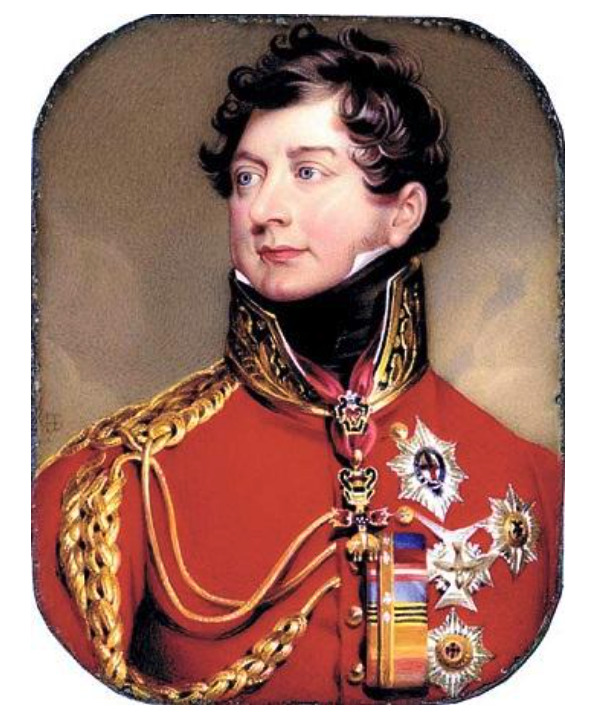Regency Diversity
Regency Period Furniture: 1800 – 1830
Furniture styles often bear the name of the historical periods in which they occur. For English furniture, this usually means naming a style after the king or queen on the throne at the time. With the Regency period of furniture, the naming convention only partially applies and reveals the complicated political atmosphere of England at the time.

In 1811, George, the Prince of Wales, assumed rule of the country, not as king, but rather as an acting monarch while his father, George III, suffered a long bout of mental illness. His official title during this time was Regent, hence the name Regency Period. Prince George held the position for nine years until his father died, leaving him the throne. Officially known as King George IV, from his coronation in 1820 until his death in 1830, his rule marked both the time period for the Regency style, but also helped to influence the aesthetics through his preferences and commissioned projects. The Regency period stands out because the true influence of the Prince as a tastemaker was unparalleled in recent history in England. Not only did his influence extend to home decor, decorative objects, furniture, and architecture, but he also influenced new social innovations that changed the day-to-day lives of the English nobility: for example, no longer did the aristocracy dine at 3pm, but closer to 7pm.
Influences
Unlike prior periods, borrowing elements from Roman and Greek furniture, designers of the Regency period often tried to recreate the actual furniture pieces found in the museums, vaults, and artwork of the time. The introduction of Egyptian artifacts also sparked a desire to bring those elements into the Regency period style. Thematic motifs of ancient gods, sphinxes, lions, and griffins ornamented many pieces. Other Neoclassical figures like animal heads, lyres, and acanthus leaves were influenced by discoveries in Italy and Greece. Additionally, a revival of Eastern influence from China and Japan inspired the use of bamboo, wood carved to resemble bamboo, and lacquered finishes.
So furniture and architectural designs during the Regency Era were heavily influenced by the expeditions and archaeological discoveries of the time. For much of the British population, this was their first exposure to the styles of other cultures. The Regency Era coincided with Napoleon Bonaparte’s reign over France, a period known as the Napoleonic Era, which saw nearly constant military conflict across Europe so any influence on Regency style in England was not going to be French.
Style
While all these cultural and historic influences helped determine the furniture of the Regency period, the style itself used ornamentation for its elegance, rather than rich carvings and curved lines exhibited in earlier periods of furniture design. The woodworking of the pieces generally exhibited plain lines and surfaces with slender legs and right angles. In many ways, this helped highlight the ornamentation by providing a simplistic background to avoid distraction.
Additionally, the size of furniture pieces changed with this period. Rather than the tall shelves of the past, cabinets and shelving units shrank in height to allow decorators to ornament the walls with paintings. The lower height of furniture also allowed for more display space to feature curios and treasures.
Elements
The components of Regency period furniture include the selection of wood and the use of metals for accents. Mahogany remained the dominant wood for furniture design, while exotic wood like ebony was featured in many high-end pieces. Additionally, veneers of rosewood and zebrawood added visually striking surfaces or features to the clean lines of the style.
The addition of metal accents, however, gave Regency period furniture its ornate elegance. Furniture makers primarily used brass, while occasionally including bronze or ormolu, an imitation gold. Brass inlays, accents along corners and legs, handles, and hinges, were popular. Brass rosettes or lions’ heads to hold rings on cabinet doors and drawers decorated many pieces, while the bases of furniture legs were often animal feet made of brass. Glass insets on cabinet doors would also be covered and protected by brass grills in lattice patterns or scrollwork designs.
Designers
The preferences of the Regent, Prince George of Wales, played a hand in guiding the style, particularly through his commissions for the Royal Pavilion. The designers who distinguished themselves at this time included Henry Holland, George Smith, Thomas Sheraton, John Nash, and Thomas Hope.
The Prince Regent himself favoured Asian influences, and court architect John Nash designed the Royal Pavilion in Brighton for him in the Indo-Saracenic style. Nash also designed Marble Arch, and Buckingham Palace. Neoclassical and picturesque themes were characteristic of his work.
Additionally, architect and designer Thomas Hope published his book Household Furniture and Decoration in 1807, which was the first to use the term ‘interior decoration’. Hope’s extensive travels (including the Grand Tour) heavily influenced his aesthetic, which juxtaposed the ancient with the modern. Hope advocated the use of top-quality materials, and his designs included copious use of ornamentation for a luxurious effect.


